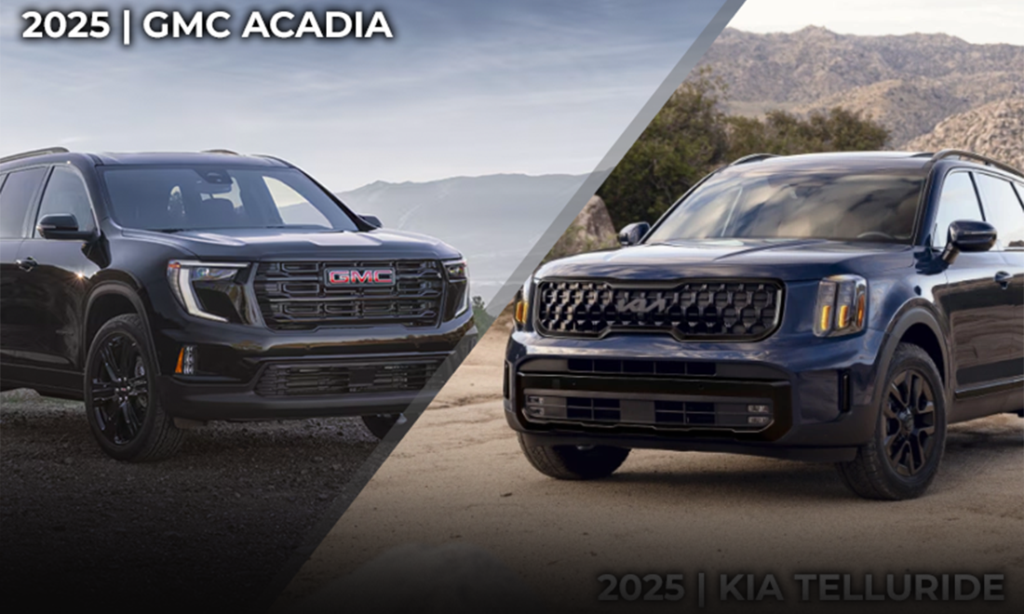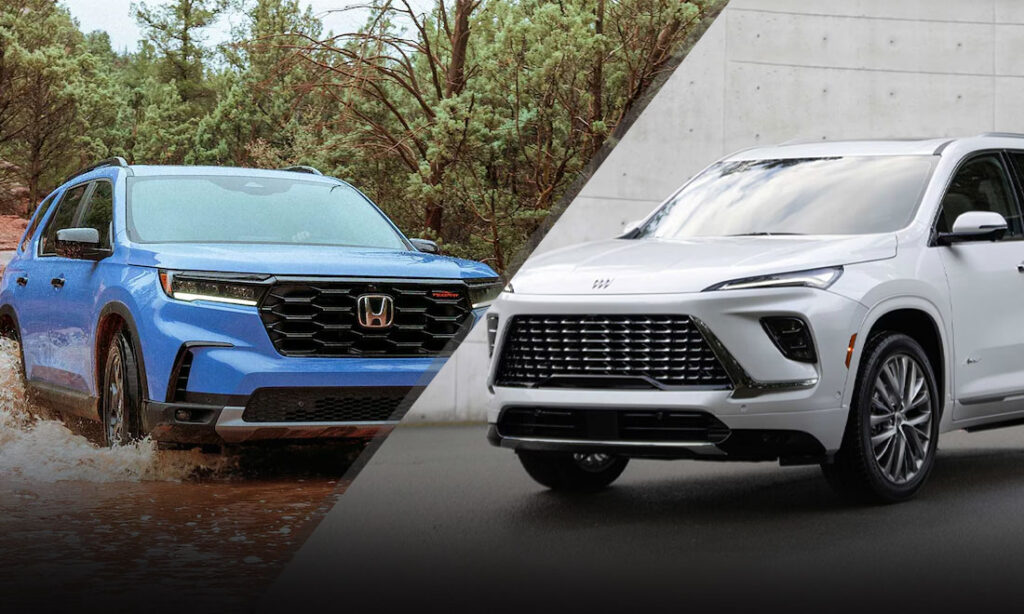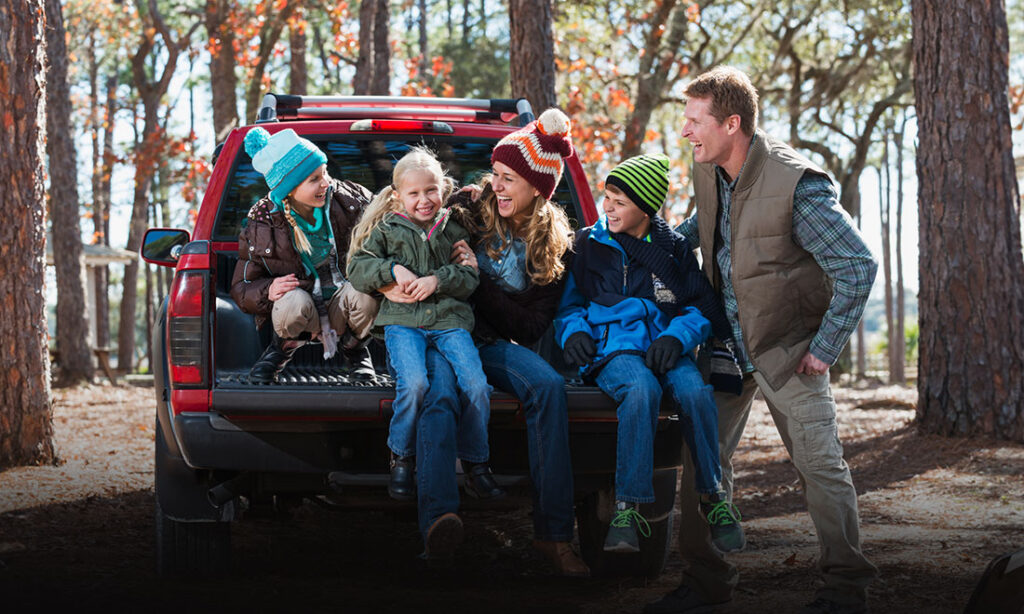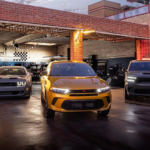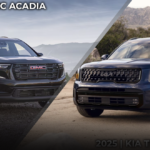The Best Full-Sized SUVs Under $40,000
From big power and towing figures to huge cargo holds and ample luxury, this list of the best full-size SUVs under $40,000 has something for everyone.
Best Full-Size SUVs under 40K
Huge, capable, and luxurious are apt descriptors for every vehicle on this list of the best full-size SUVs under $40,000. It requires stepping into the used market, but even a 3-year-old Chevy Tahoe comes with a nice list of standard equipment and the option for a bit of fancy.
These full-size SUVs are what you need when must-haves include toting around a lot of people, maybe a big trailer, and the ability to get off the beaten path at the drop of a hat. Be sure to look over our used car checklist before going shopping and review the various certified pre-owned programs to find out if one fits your needs.
2020 Cadillac Escalade
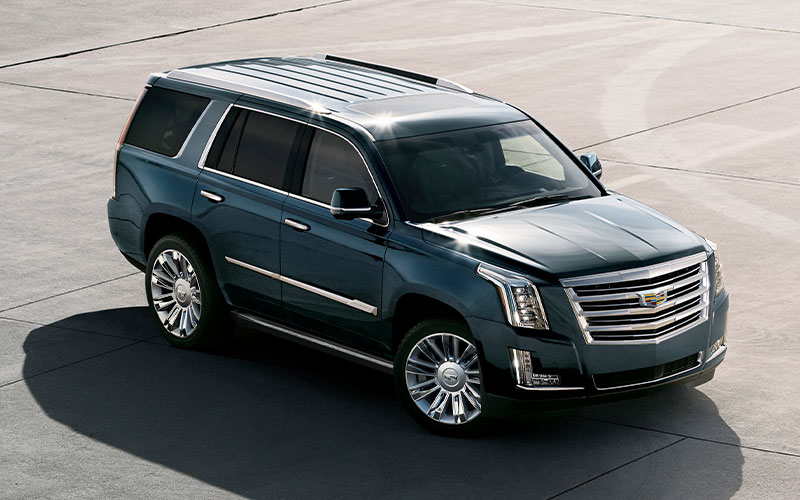
Atop General Motors’ trio of full-size SUVs is the high-falutin Cadillac Escalade. A $40,000 budget means you have to go back to the fourth-gen model, but that’s not such a bad thing. Room for seven, an 8,300-lb towing capacity, and a standard 6.2L V8 with 420 horses is a good place to start.
These Escalades have a live rear axle configuration meaning drivability is decidedly truck-like, but it sure makes for competent trailering. Standard features include 20-inch rims, triple-zone automatic climate control, and a 16-speaker audio system. If you need more cargo space than the 94 cubic foot max, find yourself an even longer Escalade ESV with 121 cubes of space.
2020 GMC Yukon

Stepping down a notch on the luxury ladder compared to a Cadillac is the GMC Yukon. Similarly sized, the Yukon can be fitted with the same 6.2L V8 but comes standard with a 355-horse 5.3L unit. Full-size SUVs are not fuel efficient and that rings true for the 2020 Yukon, which manages only 17 mpg combined in 4WD guise, but who cares when you can scream to 60 mph in just over six seconds?
In Denali trim, the Yukon is quite luxurious thanks to real wood trim, climatized front seats, a head-up display, and the trick Magnetic Ride Control suspension. As with the Caddy, those in need of more space should look to the giant Yukon XL.
2020 Chevrolet Tahoe
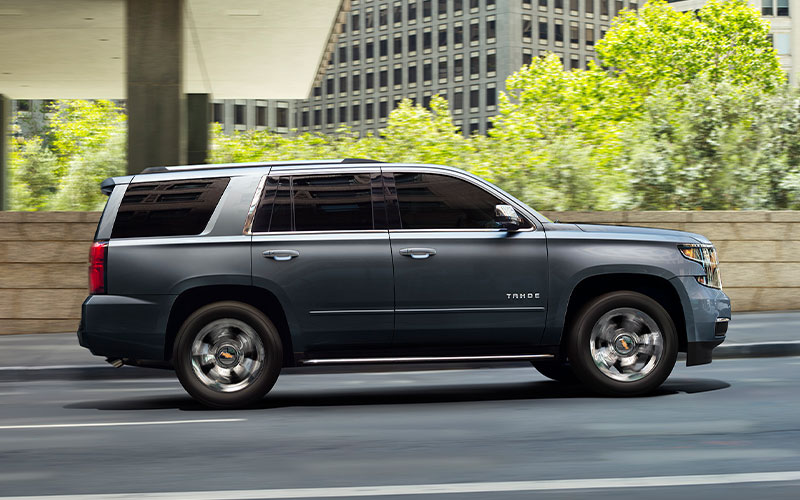
Something the 2020 Tahoe can do that the Escalade cannot is seat nine people with an available front-row bench, which is a rare find these days. It’s also a whole lot cheaper while still coming standard with triple zone automatic climate control, power-adjustable front seats, Apple CarPlay, Android Auto, and an 8-inch infotainment interface.
With the Z71 package, the Tahoe gains an off-road-tuned suspension and all-terrain rubber for easier dirt road maneuvering and advanced driver aids like forward collision mitigation, and a lane-keeping system are available. As with its GMC and Cadillac cousins, the Tahoe can be had in size huge with the OG Suburban, a land yacht boasting 39 cubic feet of storage behind the third row.
2021 Ford Expedition
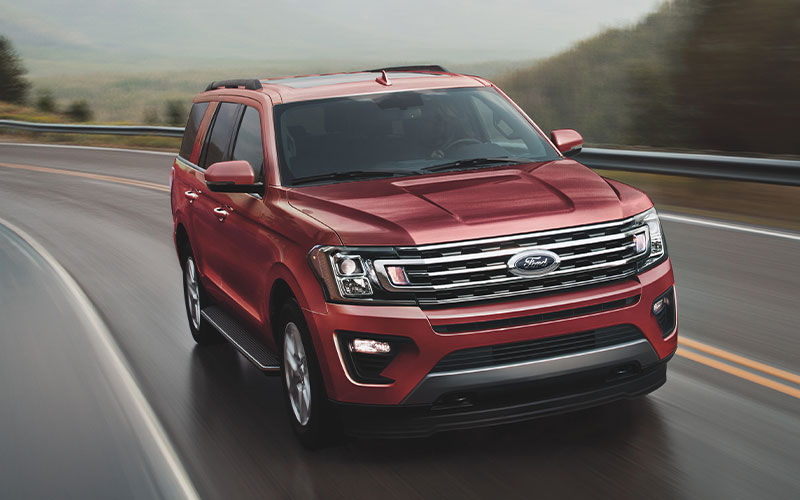
From the other Detroit purveyor of full-size SUVs is the 2021 Ford Expedition (Chrysler doesn’t compete here and the new Jeep Wagoneer is too expensive for our $40,000 budget). Part of the fourth generation that arrived in 2018, these Expeditions have an independent rear suspension for better handling that the GM trio, can seat up to eight people, and tow over 9,000 pounds. We also appreciate the option of second-row captain’s chairs on the Expedition.
Power comes from a 375 hp twin-turbo V6 that manages 19 mpg with 4WD running gear, which is relatively high for this segment. Ford fits every 2021 Expedition with forward collision mitigation, lane-keeping system, blind-spot monitoring , and rear cross-traffic alert along with a Wi-Fi hotspot, an 8-inch touchscreen, and smartphone mirroring. And max cargo space, at 105 cubic feet, tops the Tahoe. However, the Suburban-sized Expedition Max matches the big Chevy in this metric at 121 cubic feet.
2019 Lincoln Navigator
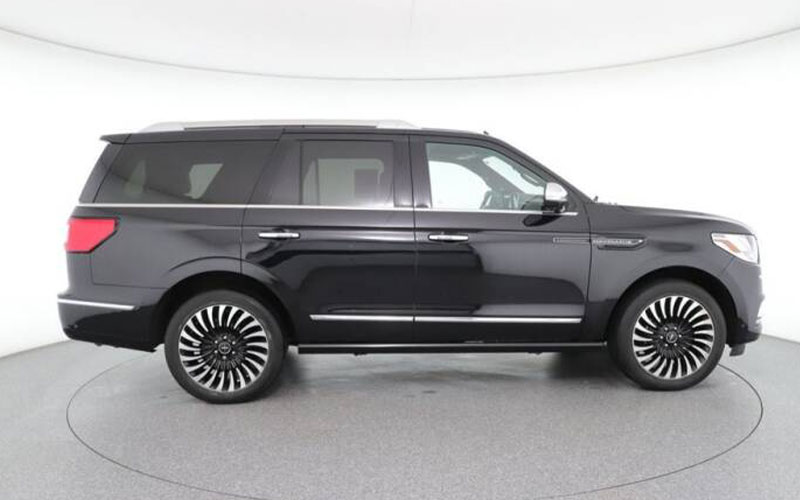
Counterpart to the Expedition is the ritzy Lincoln Navigator, a truly fancy full-sizer that you can get into for $40,000, but you’ll have to go back to at least 2019. No big deal, even then the Navigator came standard with a thundering twin-turbo 3.5L V6 rated for 450 hp and 510 lb-ft of torque. Thanks to that powerplant, the Navigator has a gnarly acceleration for a nearly 3-ton SUV.
Navigator L denotes the stretched model, but all 2019 Navis come with a 10-inch infotainment screen, a 14-speaker audio system, and a notably high-quality interior. Top-spec models boast 30-way “perfect position” front thrones, adaptive dampers, and an automated parking system.
2021 Nissan Armada
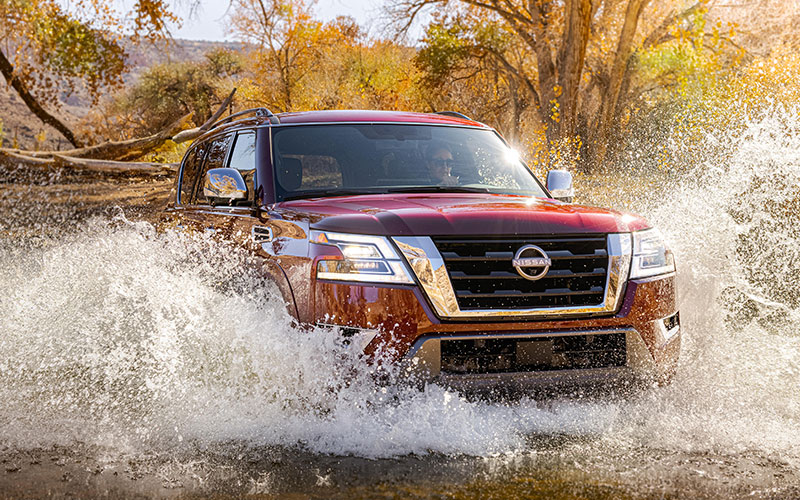
Though never as popular as the GM and Ford full-size SUVs, a 2021 Nissan Armada is still an excellent vehicle. All models feature a 5.7L V8 making 400 horsepower that can haul up to 8,500 pounds. Fuel economy is meager at just 15 mpg combined, but a mid-cycle refresh applied in 2021 means these Armadas come standard with LED headlights, a 12-inch touchscreen interface, wireless Apple and Android integration, forward collision mitigation, lane-keeping system, blind spot monitoring, rear cross-traffic alert, and even adaptive cruise control.
Overall cargo room is a bit smaller than the likes of a Tahoe or Expedition at 95 cubic feet, but that’s still a whole lot of space. Notably nice options include a rear entertainment system, a power-reclining and folding third seat, and a 13-speaker Bose stereo system.
2021 Infiniti QX80
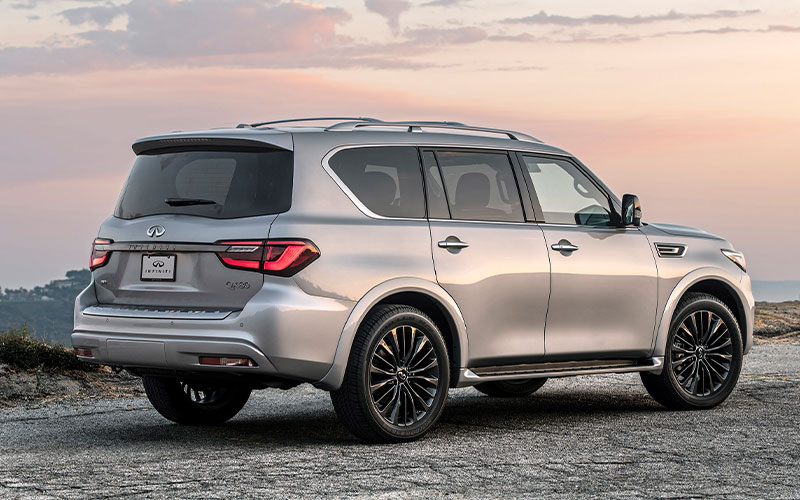
Essentially a gussied-up Armada, the 2021 Infiniti QX80 shares its stablemate’s powertrain and fully independent suspension but offers a more comfortable ride by incorporating the company’s Hydraulic Body Motion Control system, which helps reduce body lean in corners and quell road impacts.
Cargo space is the same as the Nissan, with 17 cubic feet behind the third row, but a higher level of standard luxury is achieved with a self-leveling rear suspension, a power liftgate, leather upholstery, and a heated steering wheel. With the available semi-aniline leather upholstery, 17-speaker audio system, and heated rear seats, the QX80 is an easy pick for this list of the best full-size SUVs under $40,000.
2020 Toyota Sequoia
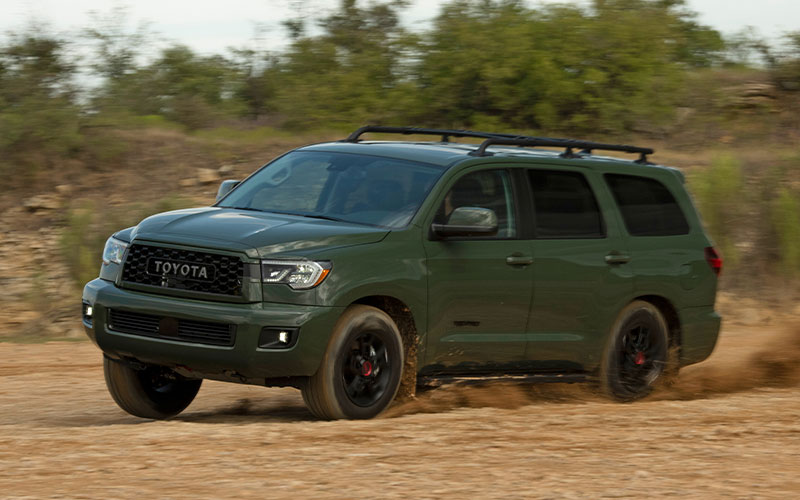
The second-gen Toyota Sequoia went on sale in 2008 making the 2020 model a bit on the aged side. But the upgraded Tundra underpinnings – fully boxed frame and independent rear suspension with double wishbones – make the Sequoia worth a look. There’s room for eight inside and an impressive 120 cubic feet of cargo space behind the front row.
Fuel efficiency from the 5.7L V8 power plant truly stinks at just 14 mpg combined when fitted with 4WD, but these 2020 models do offer a TRD Pro model. With 10 inches of ground clearance, a bevy of skid plates, and trick Fox dampers, the Sequoia becomes a remarkably capable off-roader.
2020 Lexus GX460
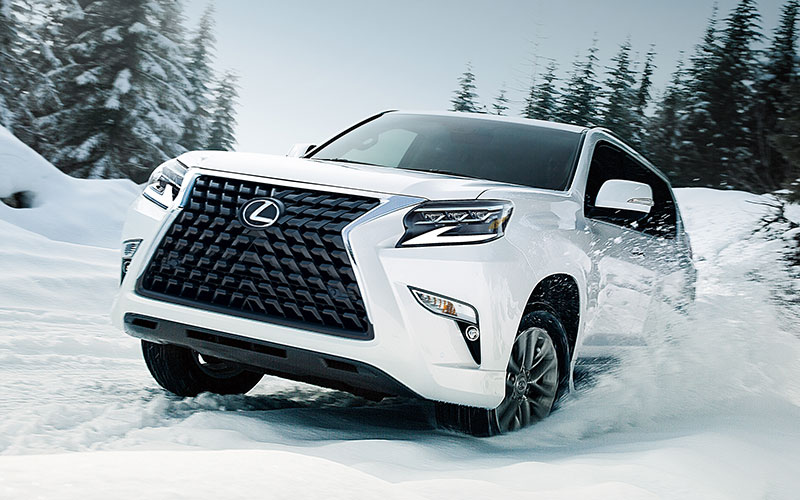
Slightly smaller than the Sequoia, the GX460 from Toyota’s luxury Lexus division is based on the bulletproof 4Runner. That means you can enjoy Lexus levels of craftsmanship in concert with the off-road prowess that comes with a solid rear axle, full-time 4WD, a center locking differential, and the Kinetic Dynamic Suspension System. That latter mouthful automatically modulates roll stiffness of the stabilizer bars for better comfort both on and off paved surfaces.
Meanwhile, the Lexus badge means options like a 17-speaker Mark Levinson audio system and climatized front seats are on tap. And if you’re seriously committed to off-roading in style, look for a GX460 equipped with the Off-Road package that added a terrain management system, Crawl Control, an auxiliary transmission cooler, and underbody skid plates. You can find out more about the GX460’s off-road chops here.
2019 Mercedes-Benz GLS
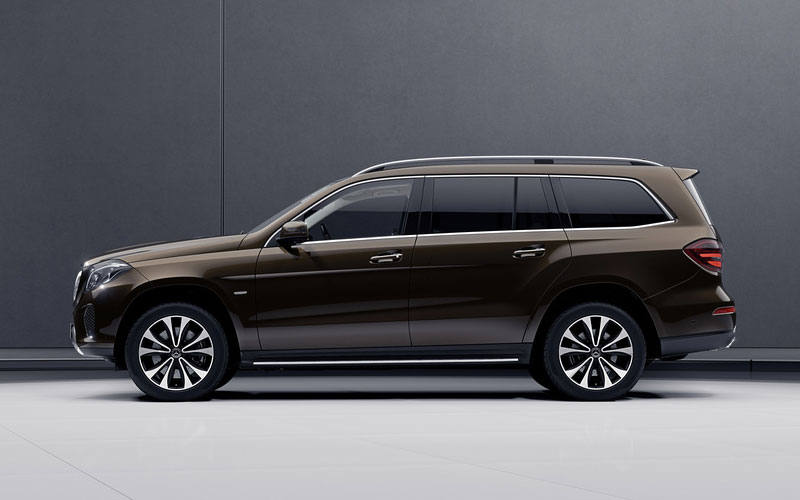
Not to be confused with the old-school G-Wagen, a 2019 Mercedes-Benz GLS is a full-size SUV with capability galore. In 450 spec, a 362-horse turbocharged V6 provides motivation along with heated front seats and a 7-inch infotainment screen. Step up to a GLS 550 for 449 horsepower thanks to a 4.7 V8 engine.
These models also feature adaptive dampers, which allows the driver to select the stiffness of the suspension. The GLS is no slouch on the cargo space with up to 93.8 cu-ft with the seats folded. Extra touches like soft-close doors set the GLS apart as a classy addition to the list.


